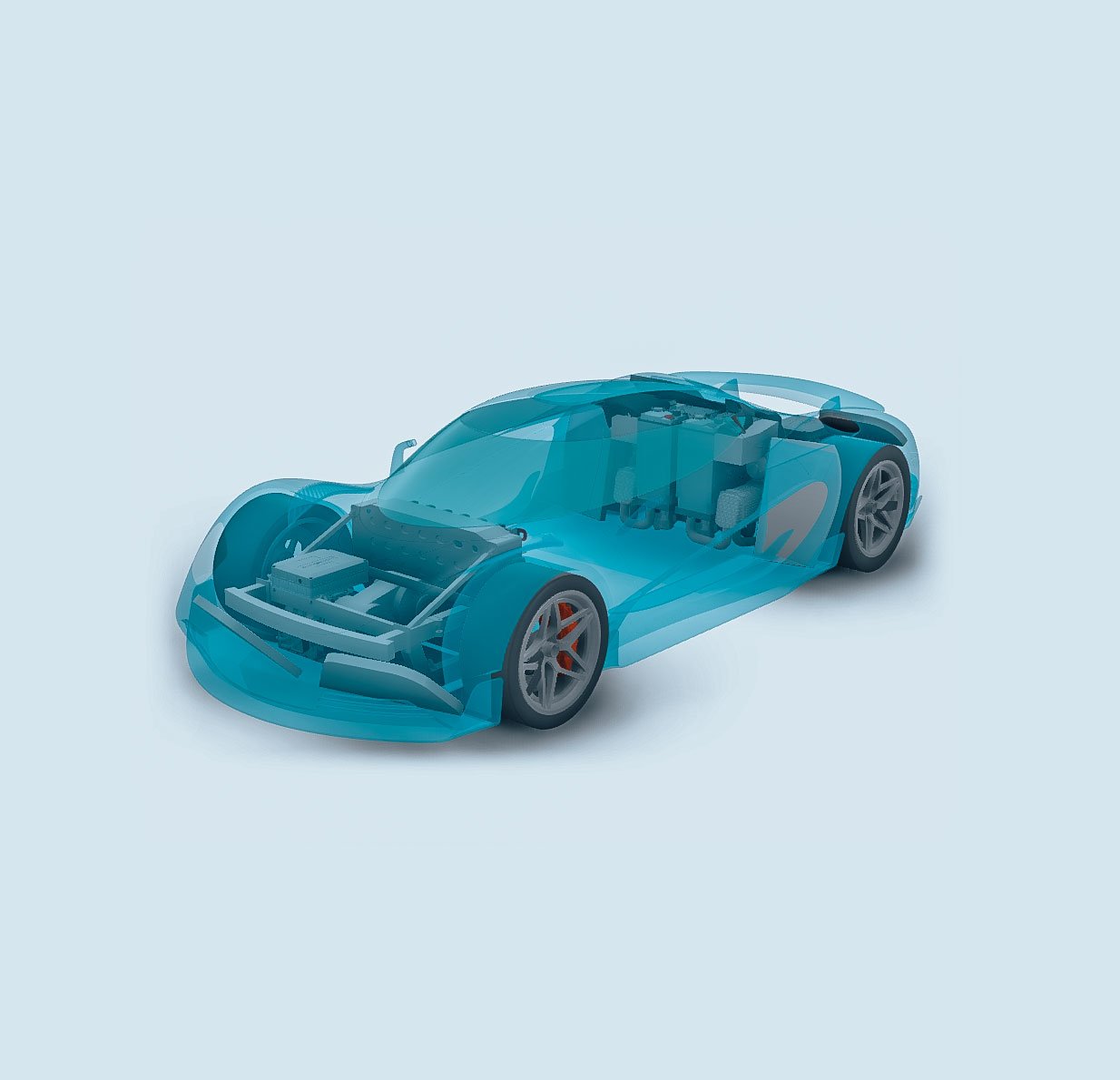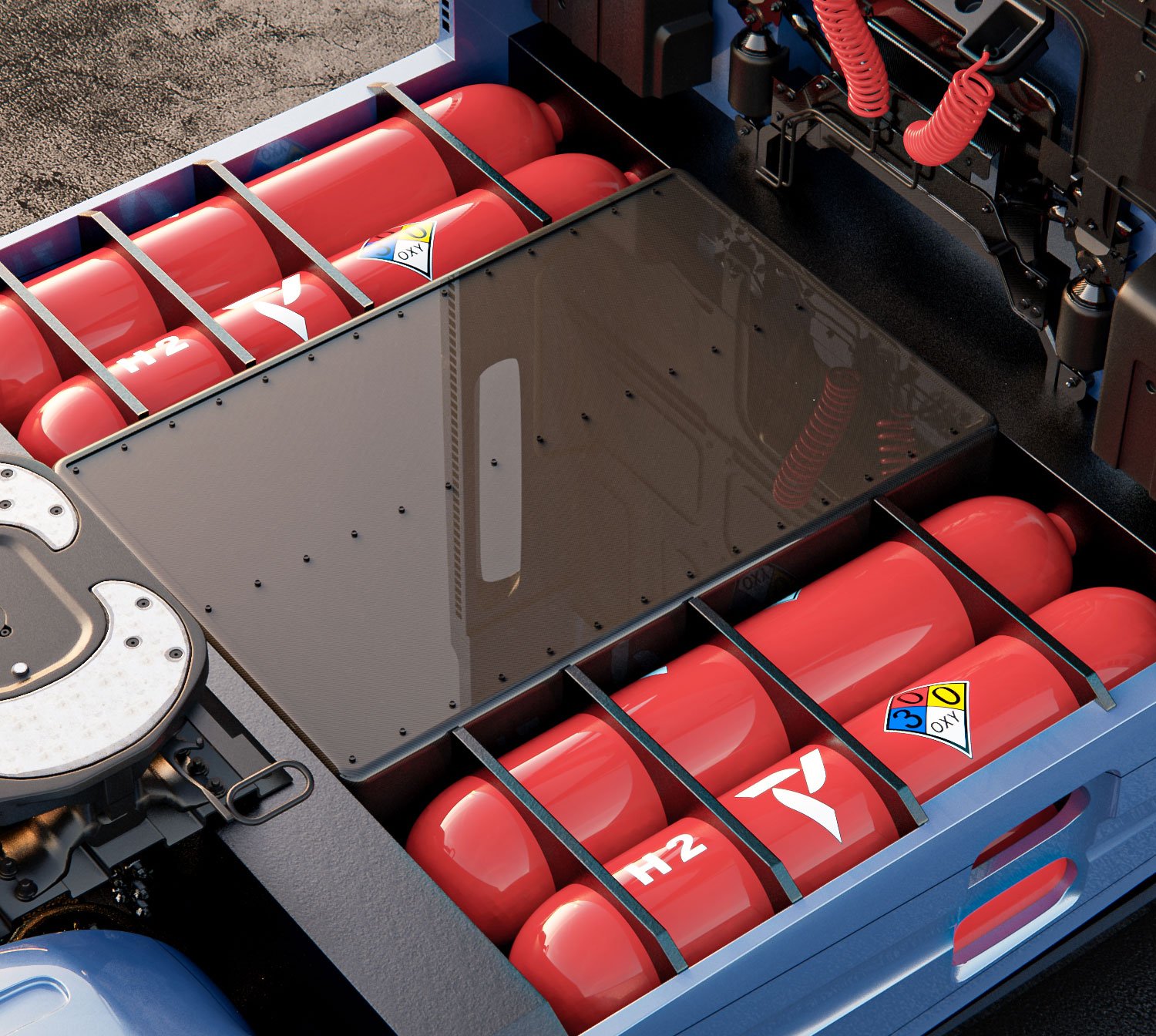
Technology
The Apricale is based on a complete reinvention of the way the fuel cell powertrain operates. While the fuel cell remains unchanged, the way the fuel cell powers the vehicle, the operation of the battery pack, and the integration of the hydrogen storage tank are all totally new. The key to the new architecture is a breakthrough in power electronics and energy management - Tri-Volt™

TRI-VOLT™
The fuel cell
Traditionally, the fuel cell acts as a range extender, adding energy to the output of the battery to increase range. This requires a big battery, meaning that current fuel cell cars weigh almost as much as BEVs.
In contrast, Apricale’s Tri-Volt™ technology means that both the fuel-cell and the battery can power the car in any combination. Typical modes would include:
At low speed and around town, the car is driven by the battery.
At steady speed the fuel cell drives the wheels directly.
For full acceleration, or driving on a track, the battery and the fuel cell are combined.
Tri-Volt™ can change these modes in milliseconds to optimise performance and efficiency.
This requires a far smaller battery (about 10% of the size of a typical BEV battery pack), which means the powertrain has the same weight as a petrol equivalent. However don’t confuse size with power: the total deployable power is 800KW, equivalent to over 1000 bhp. Using F1 principles, it can fully charge and discharge in less than a minute, so it can be recharged in seconds from regenerative braking.
It also means there is no need to plug in the battery to charge it: it can accept charge so quickly from the brakes or from the fuel cell that external charging is unnecessary.

GRAPH-PRO
The storage tank
Current hydrogen tanks have to be very strong when resisting the internal force of gas at 700 bar. However, they are not as strong when resisting external forces – e.g. a crash impact. Hence they have to be protected either by the chassis, or by a separate frame. That can add over 100 kg to the vehicle.
The Apricale solution is to make the tanks strong in terms of resisting both internal and external forces – indeed, so strong, that the tanks can become structural parts of the chassis. This is based on classic motorsport practice where, if a chassis part is only doing one job, it is not working hard enough.
The Apricale approach saves weight twice over: there is no need for a frame, or separate mounting system, to protect the tank, and the tank itself replaces part of the chassis. It also saves space, allowing for a more compact, agile car.

Technology by Viritech
The technology that makes Apricale possible has been developed by Viritech, a UK-based cleantech pioneer. Viritech is dedicated to accelerating the hydrogen revolution by radically increasing the efficiency of hydrogen powertrains.


